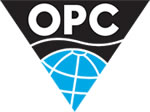
The unit is capable of producing 180,000 barrels of oil and compressing 7.2 million m³ of gas per day
The P-79 floating production, storage and offloading (FPSO) vessel left the Hanwha Ocean shipyard in Geoje-Si, South Korea, November 11th, bound for the Búzios field in the pre-salt layer of the Santos Basin. The platform will be towed to its location with the crew on board, which will help expedite the start of production. Arrival is scheduled for February of next year.

'The arrival of the crewed platform, as was done with the P-78, has proven to be a successful strategy for reducing the time to start production. This is the eighth unit of the 12 planned for the field. Our expectation is that we will be able to anticipate the first oil by two months compared to what is planned in our Strategic Plan. This is yet another result of the dedication of the entire Petrobras team, combined with negotiations with suppliers, detailed planning and, above all, discipline to carry out what was planned,' assesses the Director of Engineering, Technology and Innovation, Renata Baruzzi.
Renata recently visited the Hanwha Ocean shipyard with the Exploration and Production Director, Sylvia Anjos, to finalize the release of the unit for the Búzios field.
Production from the platform is scheduled to begin in August 2026 and will increase the current installed production capacity of the Búzios field by approximately 15.6%, to about 1.3 million barrels/day, also considering the start of production of the P-78 in December of this year. The Búzios field is located in ultra-deep waters of the Santos Basin (depth up to 2,100 meters), 180 km off the coast of the state of Rio de Janeiro, where six FPSOs are already producing: P-74, P-75, P-76, P-77, Almirante Barroso, and Almirante Tamandaré. In October, the field surpassed the mark of 1 million barrels of oil produced per day, becoming Petrobras' largest producing field. The P-79 project includes 14 wells, 8 of which are producers and 6 are WAG injectors (alternating oil and gas injection technology). The hull construction took place at Hanwha Ocean in Geoje-Si, South Korea, where the integration and commissioning of the topside modules, built in China, Brazil, South Korea, and Indonesia, also took place.
Source: Petrobras











